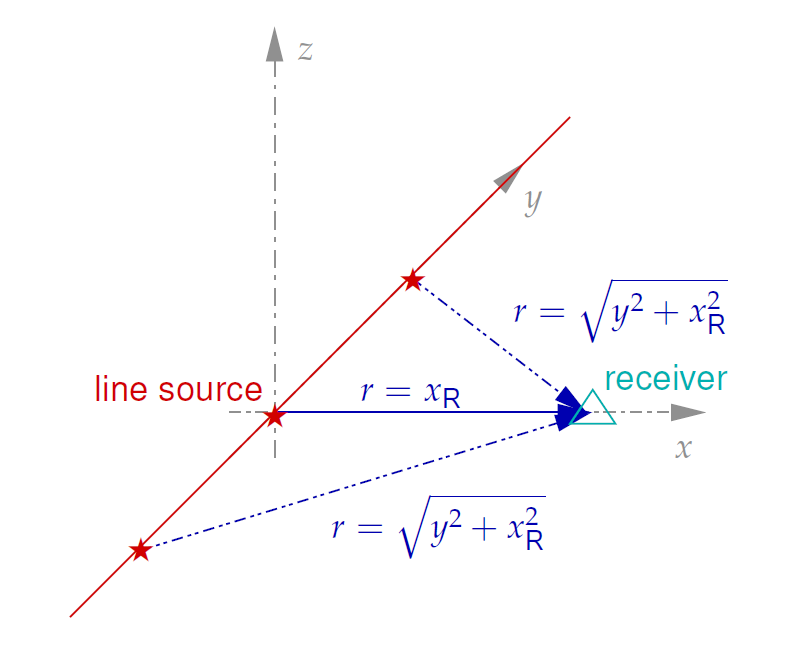lisousi
-
Author:
Thomas Forbriger
- Line-source simulation: Transform field data to apparent line-source generated waveforms in preparation for Cartesian 2D full-waveform inversion.
lisousi
Purpose
Shallow seismic field data is excited by point sources (e.g. hammer blows). Full waveform inversion (FWI) approaches which make use of Cartesian 2D forward modeling implicitly use a line source to fit the observed data. Therefore recorded waveforms must be transformed to simulate equivalent line-source generated data prior to application of 2D FWI.
lisousi offers several single-trace approaches for vertical component and radial component data excited by vertical hammer blows or explosions. Single-trace approaches can be applied to each seismic trace individually in contrast to integral transform approaches, which require data from a complete profile. Single-trace approaches have the benefit, that they are independent of geophone layout and that they perform reasonably well for data recorded on laterally heterogeneous structures. On the downside they must estimate the wave number from sample time and receiver offset. They inherently are approximations, most of them being derived from the acoustic wave Green's function. Nevertheless, they perform surprisingly well on data from visco-elastic wave propagation in heterogeneous structures.
For shallow seismic data we recommend a simple but effective procedure:
- scale waveform by

(offset times square root of 2) - convolve with

(fractional half integration) - taper samples with

where r is source-to-receiver offset and t is sample time.
Features
- Fourier domain or time domain application of convolution filter (selectable)
- Selectable scaling optimized for either direct waves, non-dispersive waves, or reflected waves
- Selectable delay of time-domain taper to match source wavelet centroid delay
- Hybrid transformation for cases where near-offset traces suffer from delayed taper
- Ability to read a variety of input formats including SeismicUn*x and raw ASCII (through libdatrwxx)
References
- Forbriger, T., Groos, L. and Schäfer, M., 2013. Appropriate line source simulation procedure for shallow seismic field data. 73rd Annual Meeting of the German Geophysical Society (DGG), Leipzig. (poster: front side rear side)
- T. Forbriger, L. Groos, M. Schäfer, 2014. Line-source simulation for shallow-seismic data. Part 1: theoretical background. Geophys. J. Int., 198(3), 1387-1404. ( doi: 10.1093/gji/ggu199)
- M. Schäfer, L. Groos, T. Forbriger, T. Bohlen, 2014. Line-source simulation for shallow-seismic data. Part 2: full-waveform inversion — a synthetic 2-D case study. Geophys. J. Int., 198(3), 1405-1418. ( doi: 10.1093/gji/ggu171)


